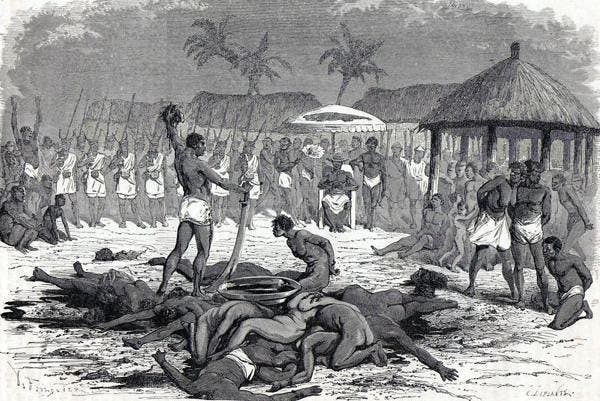The ritual of sacrifice is ubiquitous in all religions, be it self-offered or undertaken by a higher religious figures. Scholars are still investigating the object of sacrifice, and its role in shaping culture and society. One study makes an interesting hypothesis based on historical records: human sacrifice has repeatedly worked in favor of the ruling elite to consolidate their position in stratified societies. In egalitarian societies, human sacrifice was less wide spread and also less impactful.

Human sacrifice is documented all over the globe, from Europe, to the Middle East, to China. Joseph Watts of the University of Auckland and colleagues chose to study human sacrifice in Austronesian cultures since sacrifices are well documented and can be distinguished from violent homicides. It also helped that the 93 traditional cultures which were studied stemmed from the same root culture. These included cultures in Taiwan, Hawaii, Easter Island, New Zealand or Madagascar.
The social-political environments where the sacrifices took place ranged from small egalitarian cultures where few or no individuals had more power to complex political structures with well defined hierarchies.
Human sacrifice was observed in 40 of the 93 studied cultures. It was practiced in 5 of the 20 egalitarian societies (25%), 17 of the 46 moderately stratified societies (37%), and 18 of the 27 highly stratified societies (67%) sampled. Some of the identified modes of sacrifice were: burning, drowning, strangulation, bludgeoning, burial, being crushed under a newly built canoe, being cut to pieces, as well as being rolled off the roof of a house and then decapitated.
The researchers then ran complex statistical models to see how the cultures evolved over time and what the role of sacrifice was in this respect, if any. Apparently, political authority was strongly linked to human sacrifice with the destined victims often being those of lower status.
“Whilst evolutionary theories of religion have focused on the functionality of prosocial and moral beliefs, our results reveal a darker link between religion and the evolution of modern hierarchical societies,” the researchers wrote in Nature.
Egalitarian societies which made human sacrifices did not became more stratified. Moderately stratified cultures who employed sacrifice tended to become even more stratified, while stratified societies became more stable. That’s because the people honoring the sacrifice were typically the up-most members of the elite: chiefs and towering religious figures.
“For a death to be called human sacrifice it must be religiously motivated,” Watts says. “While human sacrifice is not used for control in modern societies, religion more broadly could still serve this function. Our study highlights how religion is vulnerable to exploitation by social elites and can become a tool for building and maintaining social control – the use of human sacrifice as a means of social control provides a grisly example of just how far this can go.”
Quantifying sacrifice, religious status and culture structure can be a daunting task, and these results should be taken lightly. Moreover, we shouldn’t risk extrapolating these findings to Western cultures, despite the similarities.
In his book “On Sacrifice”, Moshe Halbertal makes a distinction between “sacrificing for” and “sacrificing to”. “Sacrificing to” refers to an offering made in the religious domain, typically under a protocol known as ritual, to consolidate a bond of solidarity between the person making the offering and God. When this relationship is hierarchical, it becomes inherently vulnerable to rejection, hence trauma. When taking a noninstrumental form, “sacrificing to” becomes a tool that transcends market exchange logic. “Sacrificing for”, on the other hand, refers to the sacrifice of the self in an effort to act beyond one’s self-interest.
Halbertal argues that sacrifice strengthens the bond between the person carrying the sacrifice and god, but also leads to violence. Later, as cultures became more complex, leaders turned the state into a false idol — a god. In its name millions willingly sacrifice themselves and go to war. The present findings, though very abstract, seem to support Halbertal’s dissections.



